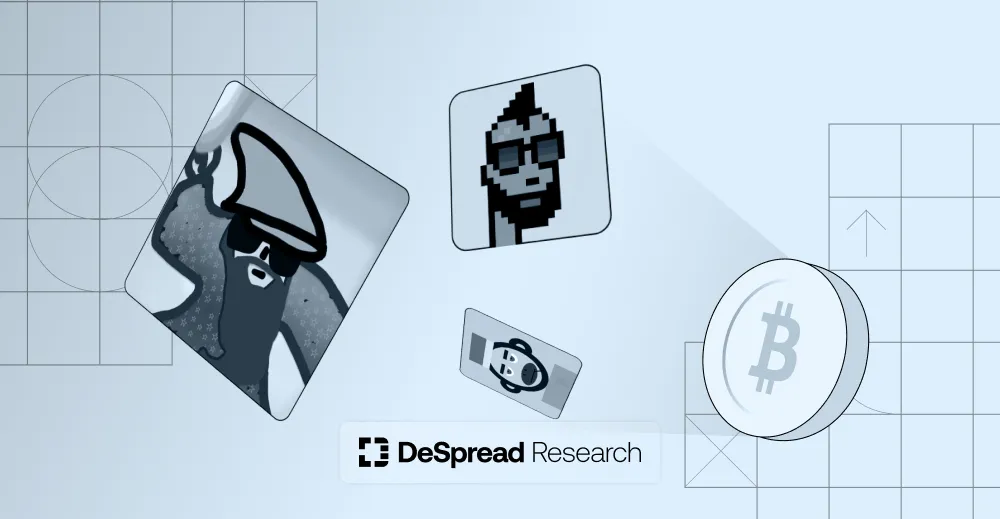Bitcoin Under Siege
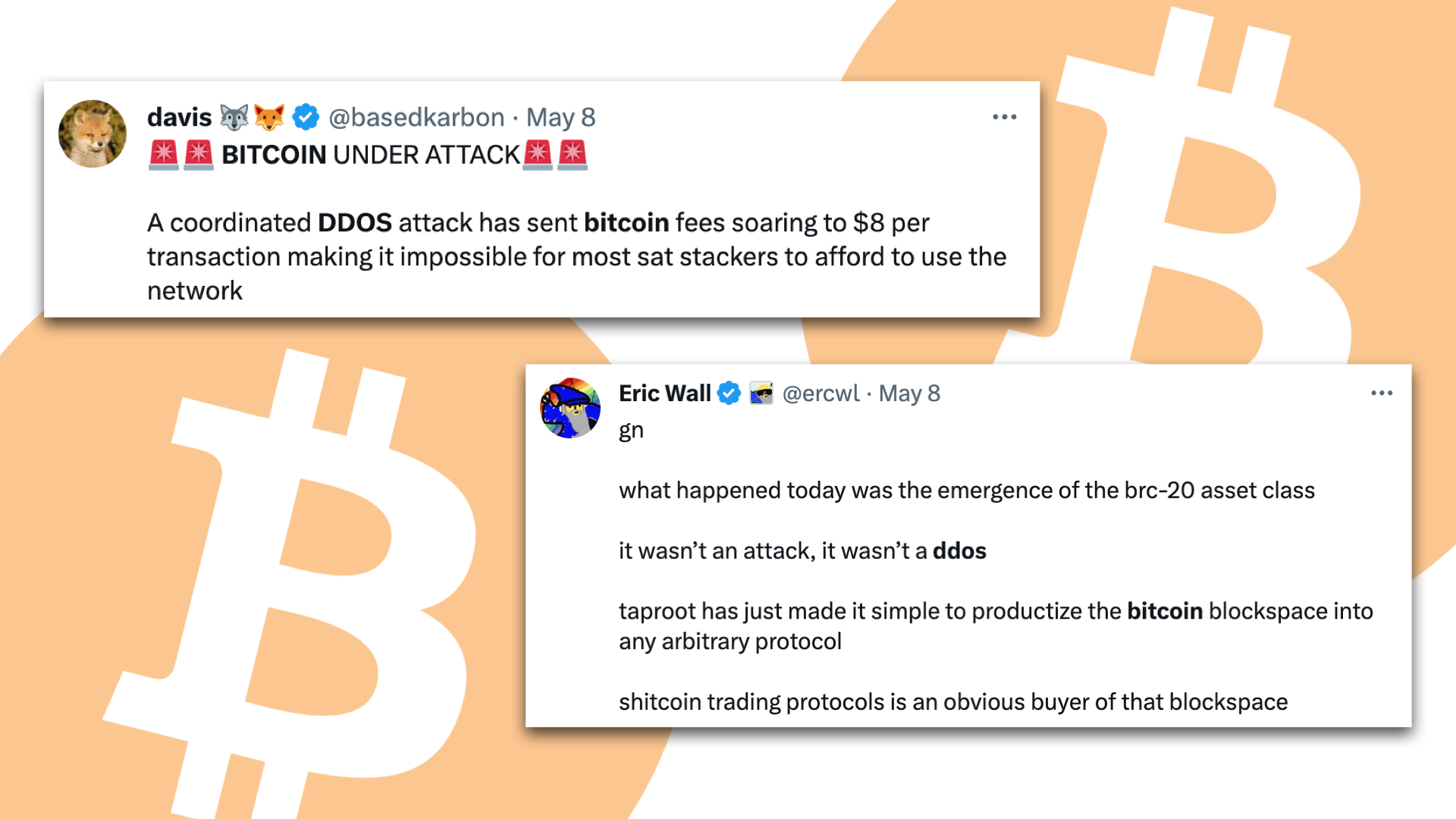
In May 2023, a seismic event shook the Bitcoin network as transaction fees skyrocketed. Within certain corners of the Bitcoin community, cries of a “DDoS attack on the Bitcoin network” echoed. However, another faction countered with claims that a “new asset class was born within Bitcoin,” while also mounting defenses against the genesis of such occurrences.
This surge in Bitcoin network transaction fees was spurred by the explosive demand for BRC-20, a token emulating Ethereum’s ERC-20 tokens. The tumult was driven by a convergence of enthusiasts eager to delve into Bitcoin’s evolving narrative and a torrent of transactions minting BRC-20 tokens, which precipitated an inundation on the network.
However, it’s critical to underscore that BRC-20 bears no technological affinity with Ethereum’s ERC-20 tokens. BRC-20 merely borrows the name from its ability to issue interchangeable tokens atop the Bitcoin network. Despite this distinction, the public responded fervently, with some envisioning echoes of Ethereum’s DeFi summer and NFT rise reverberating in the Bitcoin ecosystem.
The Dignity of Satoshi
Derived from “ordinal,” signifying numerical order, Ordinals, a nomenclature that emerged from this realm, took root in January 2023. Crafted by Casey Rodarmor, it’s a protocol leveraging Bitcoin’s script to empower Satoshi, the smallest unit of Bitcoin, with the faculty to append arbitrary data. Through Ordinals, the capacity to embed text, images, audio, video, and code onto the Bitcoin blockchain emerged. Consequently, a wave of PFP (Profile Picture) NFT collections akin to those in Ethereum’s realm unfurled within the Bitcoin ecosystem. Notably, even an emulation of the renowned FPS game “Doom” found manifestation through Ordinals.
A deeper elucidation reveals two key functionalities empowered by Ordinals:
- Assignment of individual numbering to Satoshis, enhancing non-fungibility.
- Attachment of arbitrary data to Satoshis at will.
Through Ordinals, users confer non-fungibility upon Satoshis via the first functionality and append an array of data formats to distinct non-fungible Satoshis through the second. This functionality has enabled the distinction of specific data stored within the Bitcoin network for each Satoshi, bearing some similarities to Ethereum NFTs. The label of Ordinals as Bitcoin’s NFT standard stems from this. For instance, the first Satoshi mined in the Bitcoin network is denoted as ‘Sat 0‘, and there exists only one within the Bitcoin network.
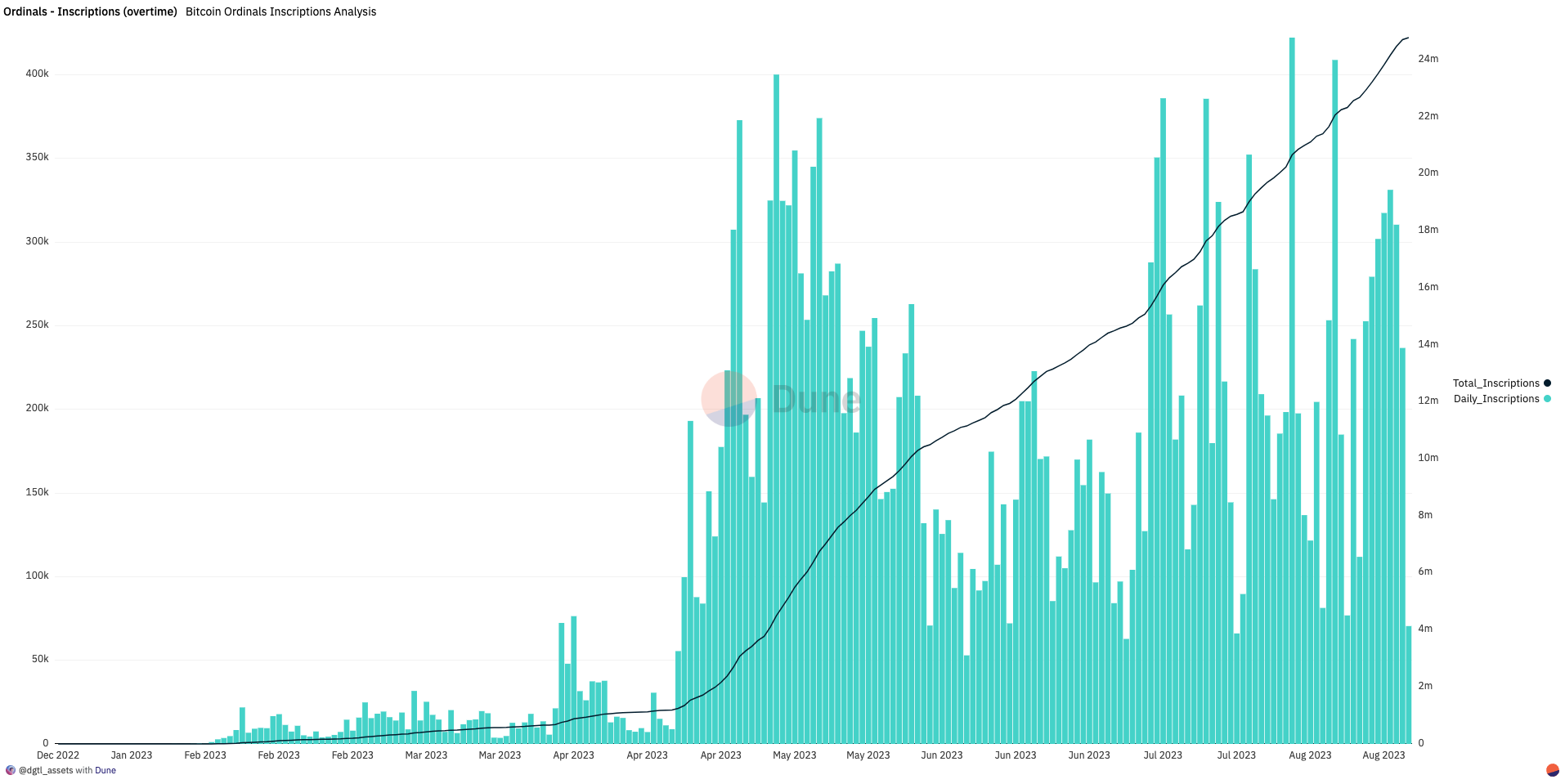
This distinction—data attached to each Satoshi being truly stored within the Bitcoin blockchain—drew substantial attention, especially due to the capability to accommodate data up to the Bitcoin block’s maximum size of 4MB. This differentiation in data storage from Ethereum’s NFT approach also played a part in catalyzing an explosive reaction to Ordinals. While Ethereum occasionally sees instances like Cryptopunks and Art Blocks, where data resides entirely within the blockchain’s data space, most Ethereum NFTs store actual data on separate protocols like IPFS, while metadata linking to this stored data is attached to the NFT.
In essence, Ordinals bestowed the ability to individualize Satoshis with non-fungibility-enhancing numbers and directly store data in the Bitcoin blockchain, bypassing the reliance on external protocols, thus triggering substantial resonance in the NFT market.
Laser Eyes vs. Taproot Wizards
Ordinals have not only caused a major stir within the crypto community, but reactions have been far from uniform. For those well-acquainted with Bitcoin culture, the sight of “Laser Eyes” profiles on platforms like X (formerly Twitter) might ring a bell. Self-proclaimed Bitcoin maximalists, asserting that Bitcoin is the sole valuable cryptocurrency, have criticized Ordinals’ emergence as “disruptive to Bitcoin’s original purpose.”
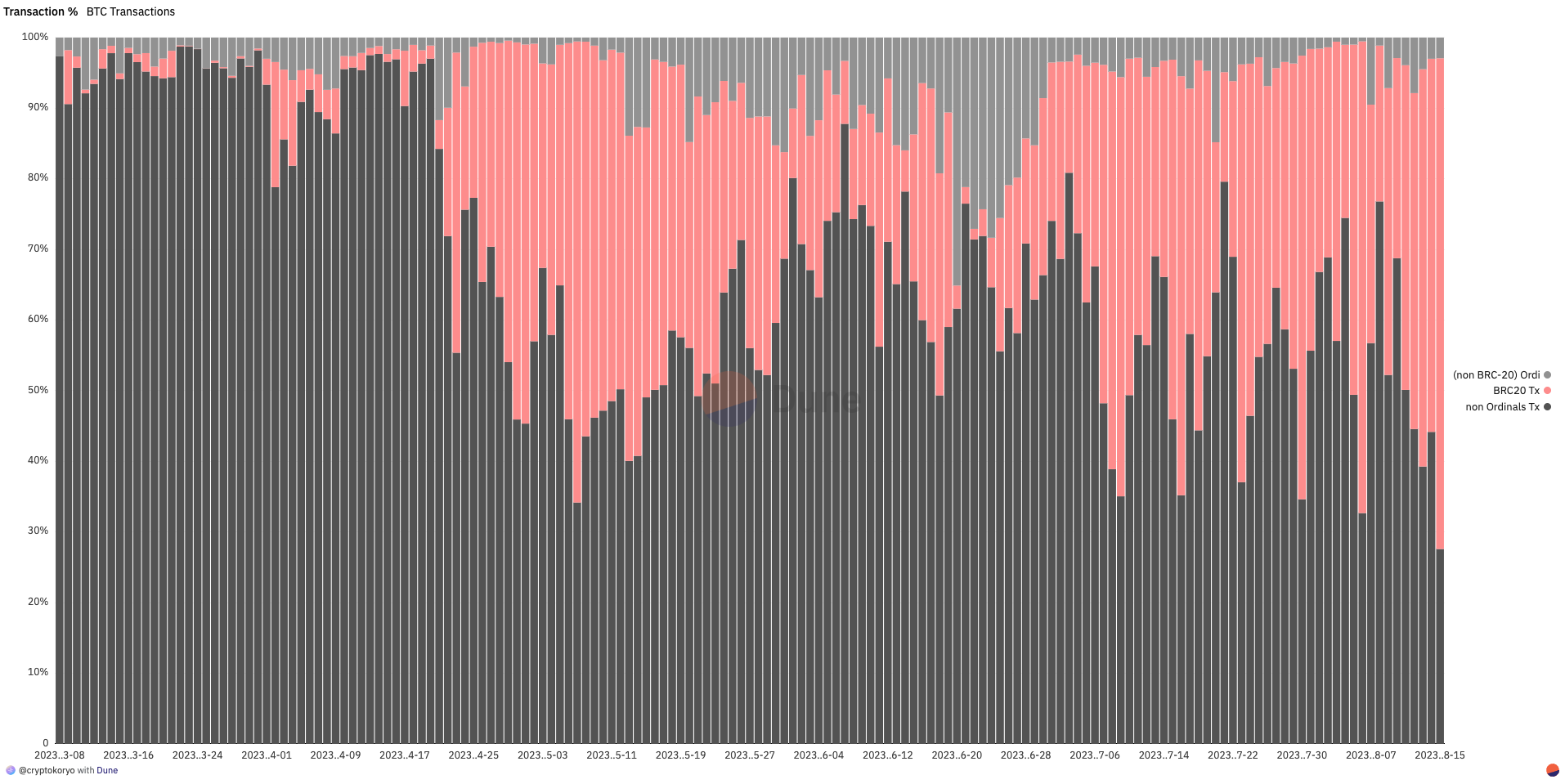
The reasons behind their dissent are not unfounded. Transactions involving BRC-20, a fungible token crafted using Ordinals, have at times accounted for over half of the total transactions on the Bitcoin network. Consequently, this has led to substantial spikes in transaction fees within the Bitcoin network.
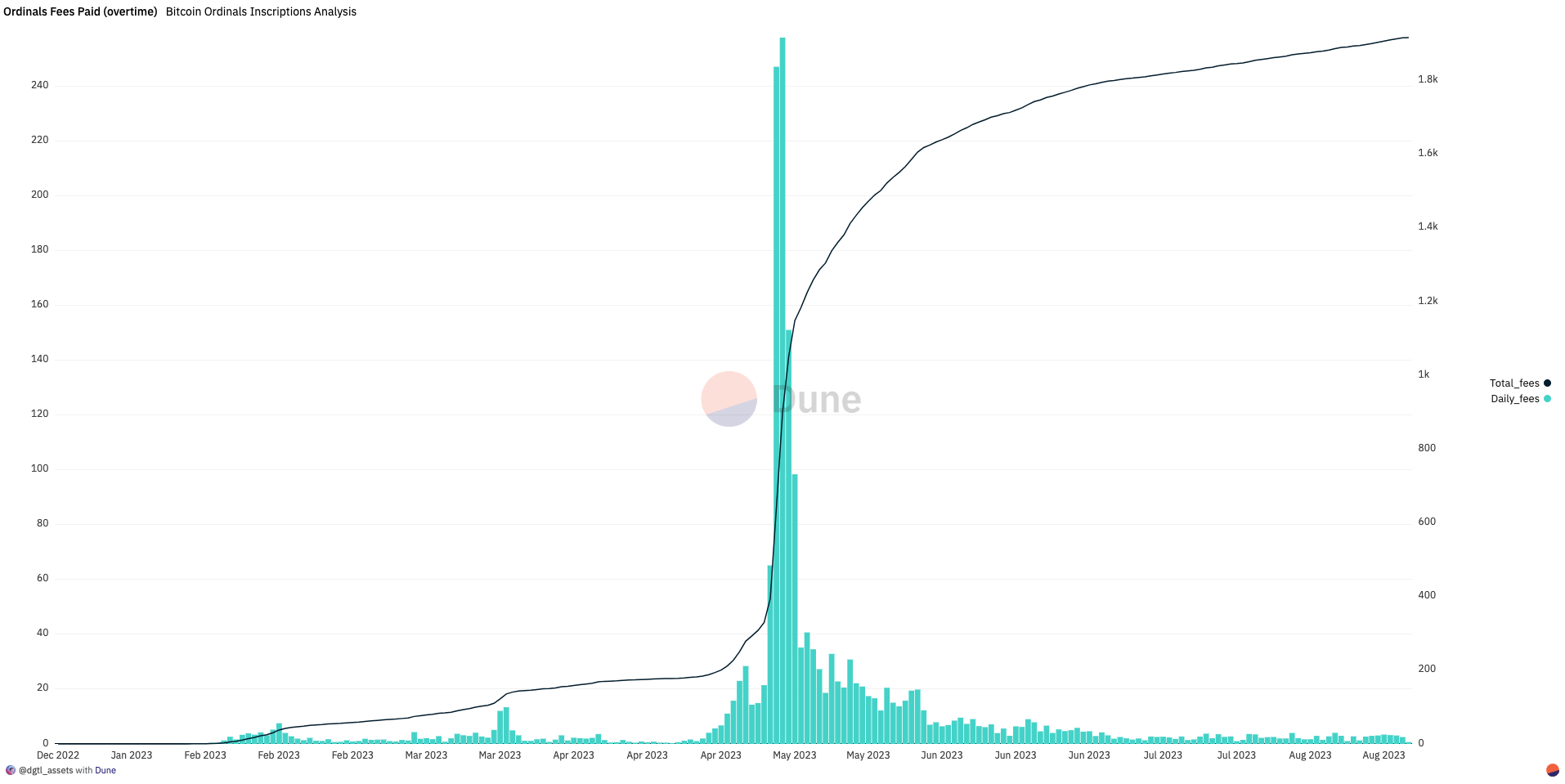
In early May, amid a skyrocketing demand for BRC-20, Bitcoin’s network found itself struggling to process blocks. This predicament compelled Binance to temporarily halt Bitcoin withdrawals. In response, Bitcoin developer Luke Dashjr labeled Ordinals-related transactions as spam and sought ways to filter them out.
On the flip side, Eric Wall and Udi Wertheimer, known for their sharp critiques of Bitcoin maximalism, curiously took pride in the block congestion resulting from Ordinals. They even leveraged the Ordinals emergence to create a collection called Taproot Wizards, fostering a sense of community spirit.

Eric Wall and Udi Wertheimer, who have long criticized Bitcoin maximalism for hindering the cryptocurrency’s development, also attended the Bitcoin conference in Miami last May. There, they engaged in discussions about Ordinals and Bitcoin. Critics of Ordinals questioned the necessity of introducing inefficiencies like Ordinals into Bitcoin. In response, Eric and Udi argued that for Bitcoin’s sustainability, the network must continue to adapt to phenomena like Ordinals, thereby testing its resilience.
This debate remains ongoing, continuing in the present day. Bitcoin maximalists and Taproot Wizards staunchly clash over the very “purpose of Bitcoin.” Yet, determining a definitive answer is as complex as interpreting established laws yielding diverse verdicts. Similar to how interpretations of Satoshi Nakamoto’s Bitcoin whitepaper can lead to varied conclusions, perspectives on the Ordinals debate differ based on how the Bitcoin whitepaper is construed.
Sustainability Concerns
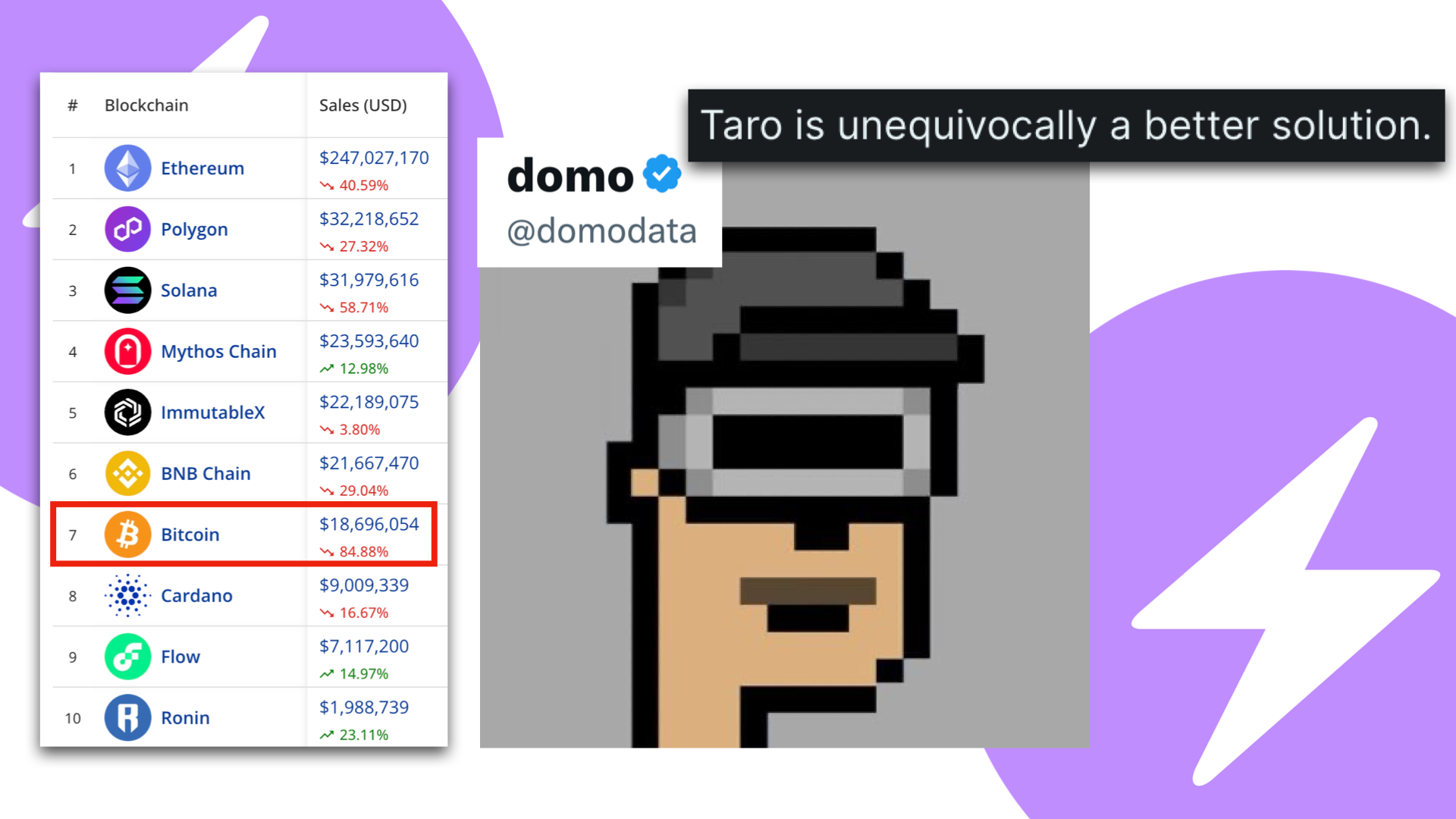
The popularity of Ordinals during the first half of this year was nothing short of explosive. However, the transaction volume from Bitcoin Ordinals has currently seen a decrease of around 85%. Some corners are even saying “Ordinals is dead” in response to this trend. Within the Ordinals community, the lack of a low-entry point to attract new users has been pointed out as a cause, and it’s also been noted that Bitcoin’s block time has negatively impacted user experience.
Furthermore, the creator of the BRC-20 protocol, @domodata, had previously asserted that Taro, a protocol enabling the creation and transfer of assets on Bitcoin’s Lightning Network, is a far superior choice to BRC-20. Perhaps the BRC-20 tokens utilizing Ordinals were destined to be just an experiment.
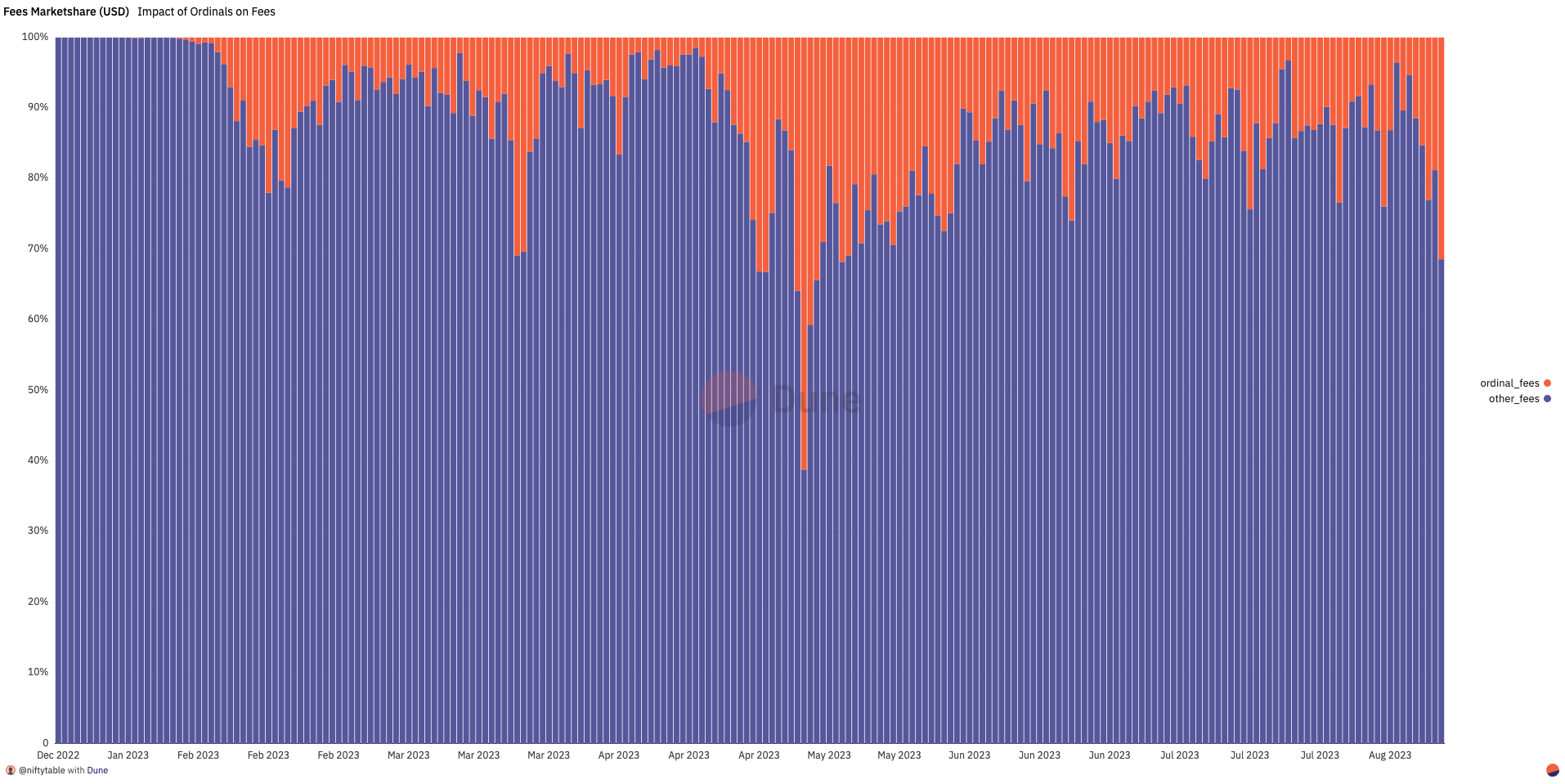
However, there are still voices resonating with the necessity of Ordinals. Particularly, the network fees generated by increased Ordinals usage could provide additional incentives to Bitcoin mining nodes, thereby strengthening the network’s security. This role could somewhat alleviate the security budget issues Bitcoin might face as block rewards decrease due to the halving process. Yet, to fulfill such a role, data storage on the Bitcoin blockchain while maintaining a positive user experience is paramount.
All of these debates ignited by Ordinals boil down to how far the utilization of Bitcoin’s block space can be tolerated, essentially delving into the conflict between the two camps fighting over what the “true purpose of Bitcoin” is. While Satoshi Nakamoto’s Bitcoin whitepaper explicitly defines Bitcoin as a P2P electronic cash system, the philosophy of libertarianism that underpins Bitcoin suggests that well-contained freedom beyond regulations should be embraced. Whether the Bitcoin purists or the reformists will emerge victorious remains to be seen.


